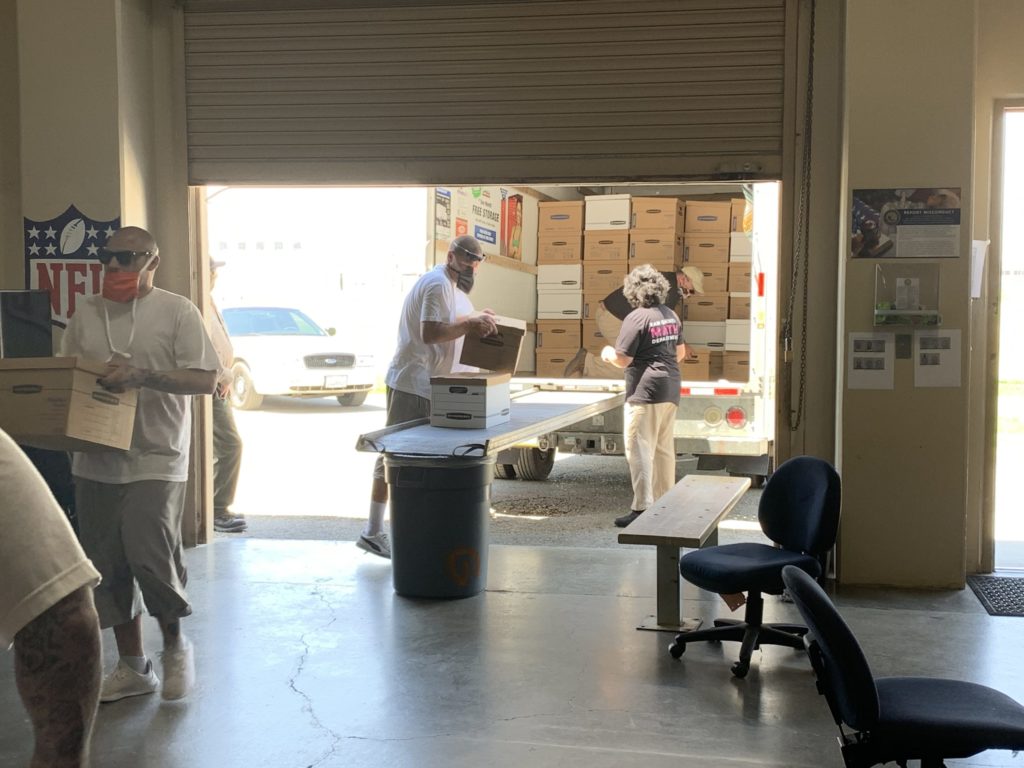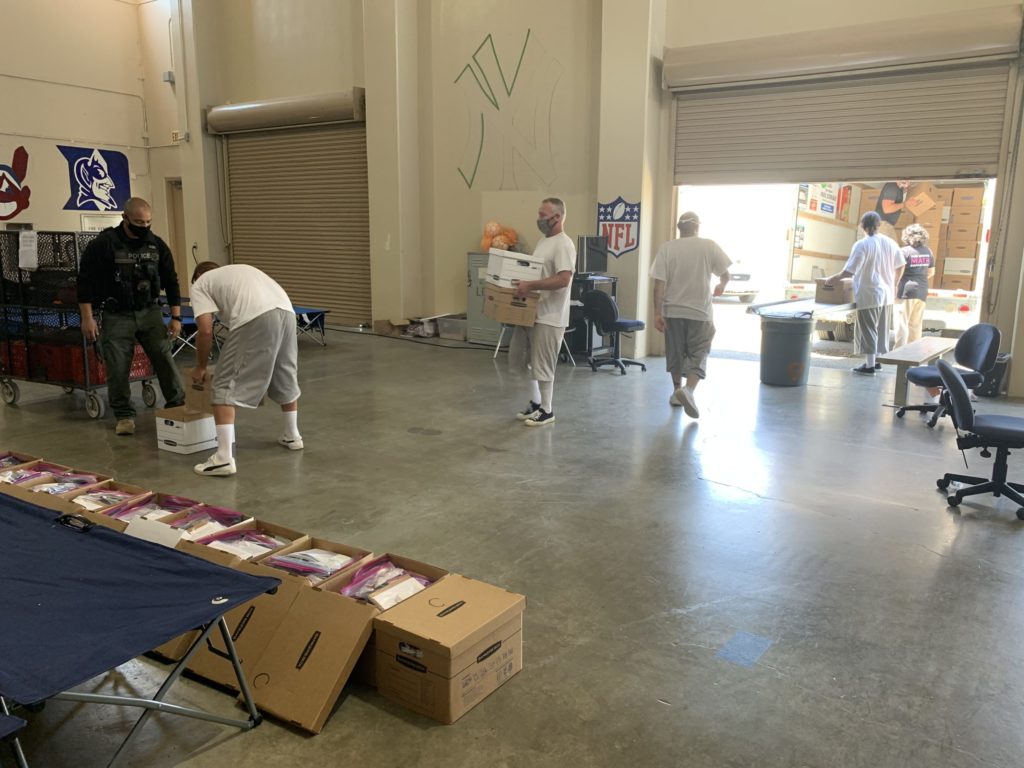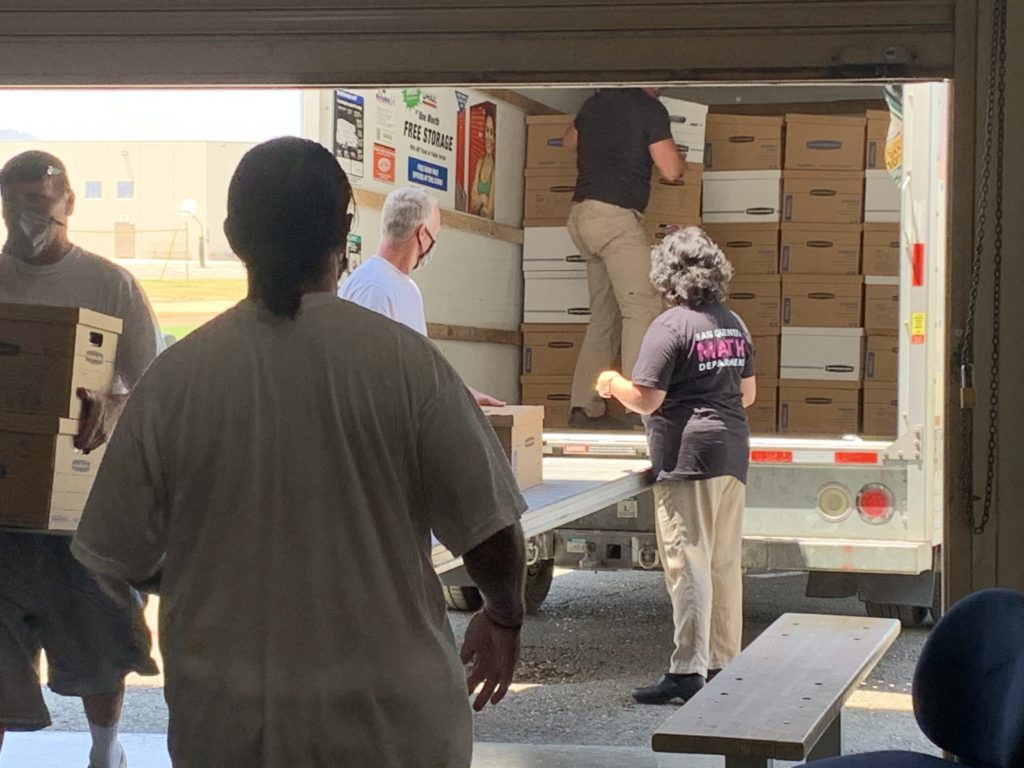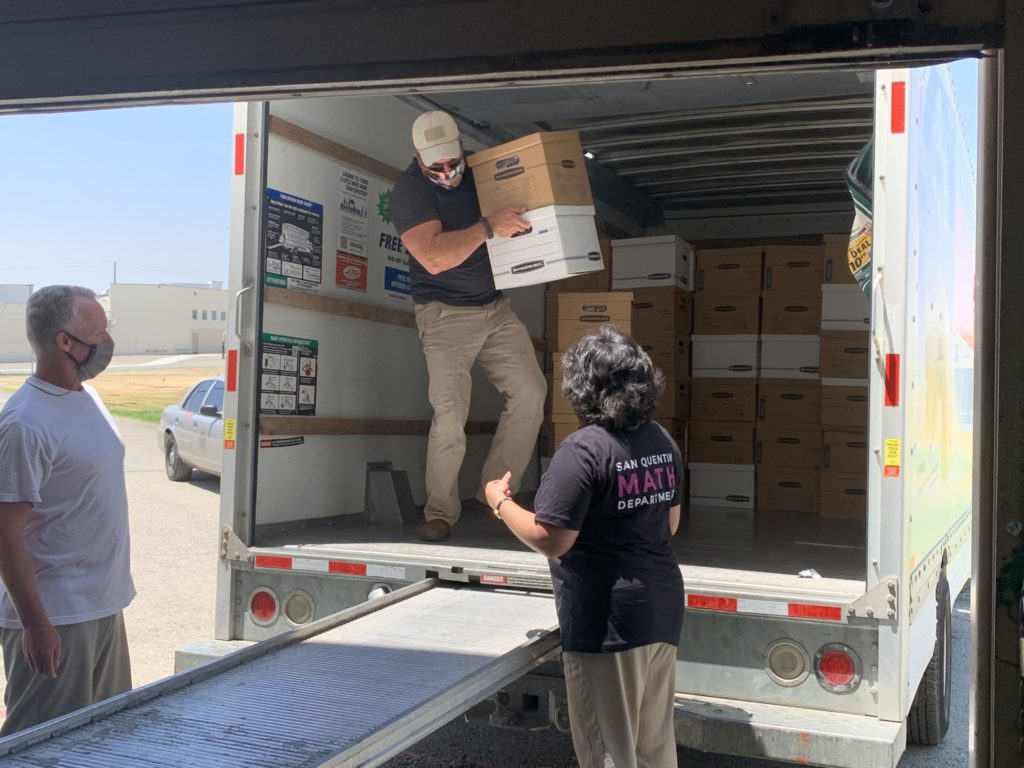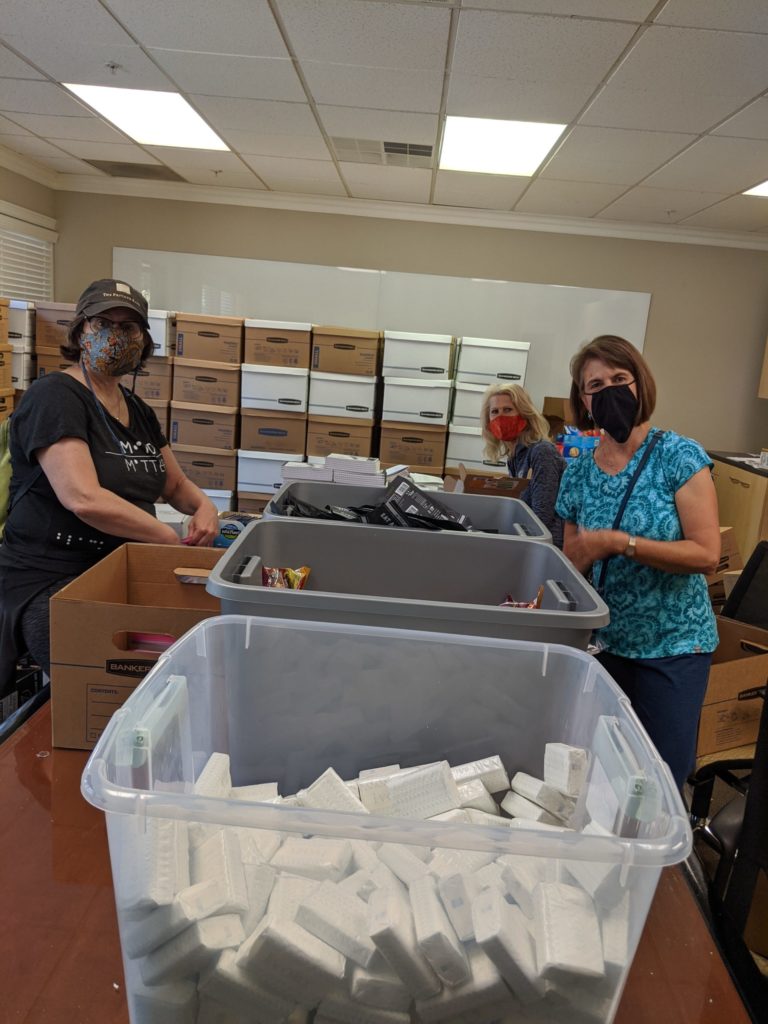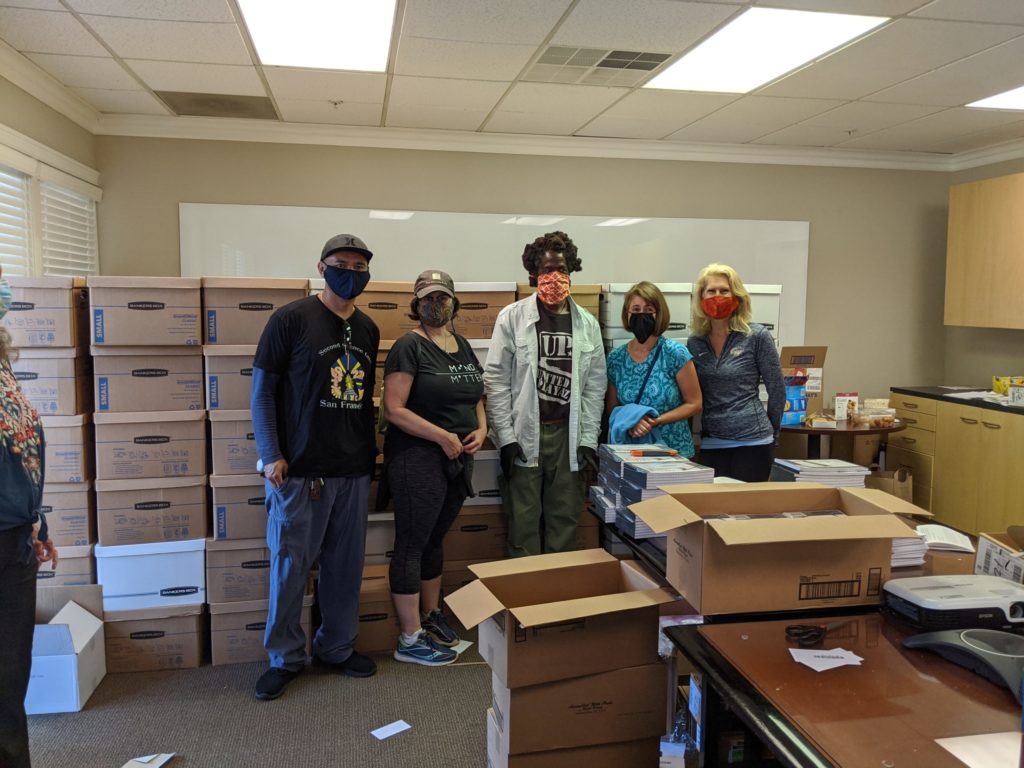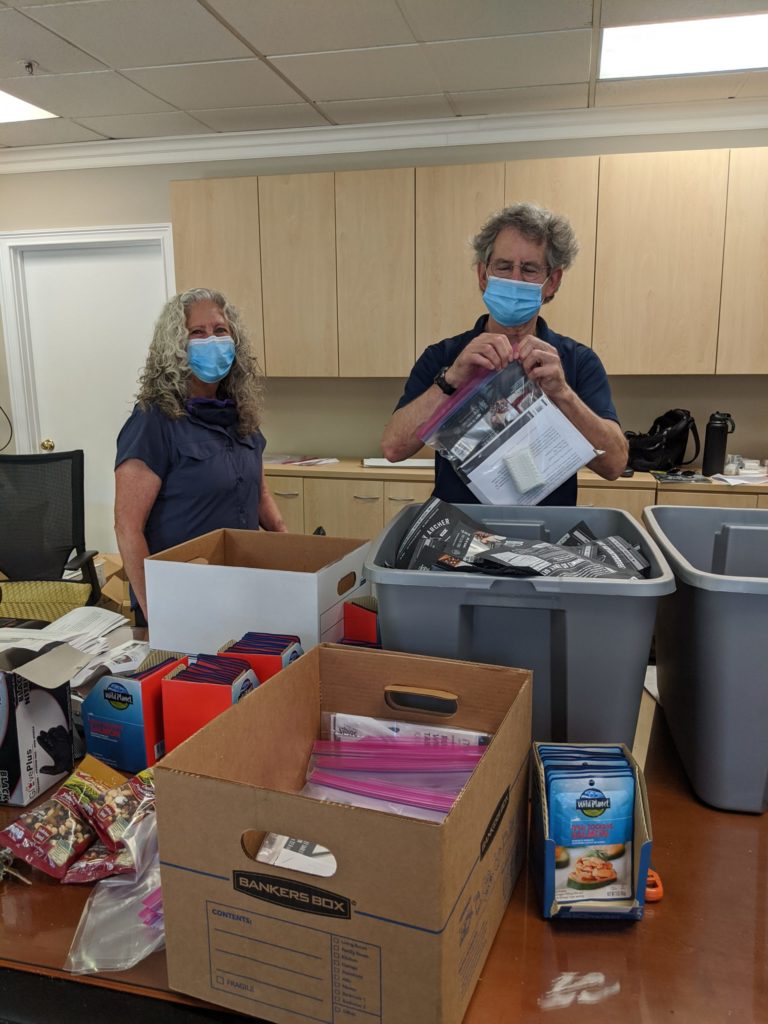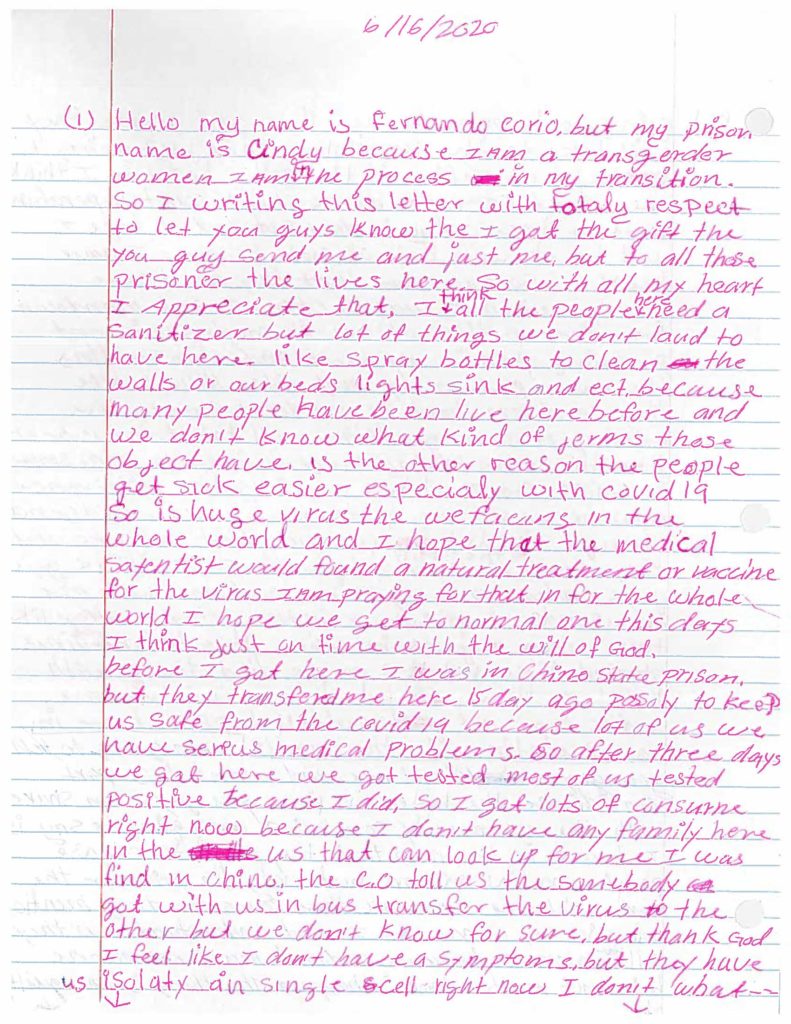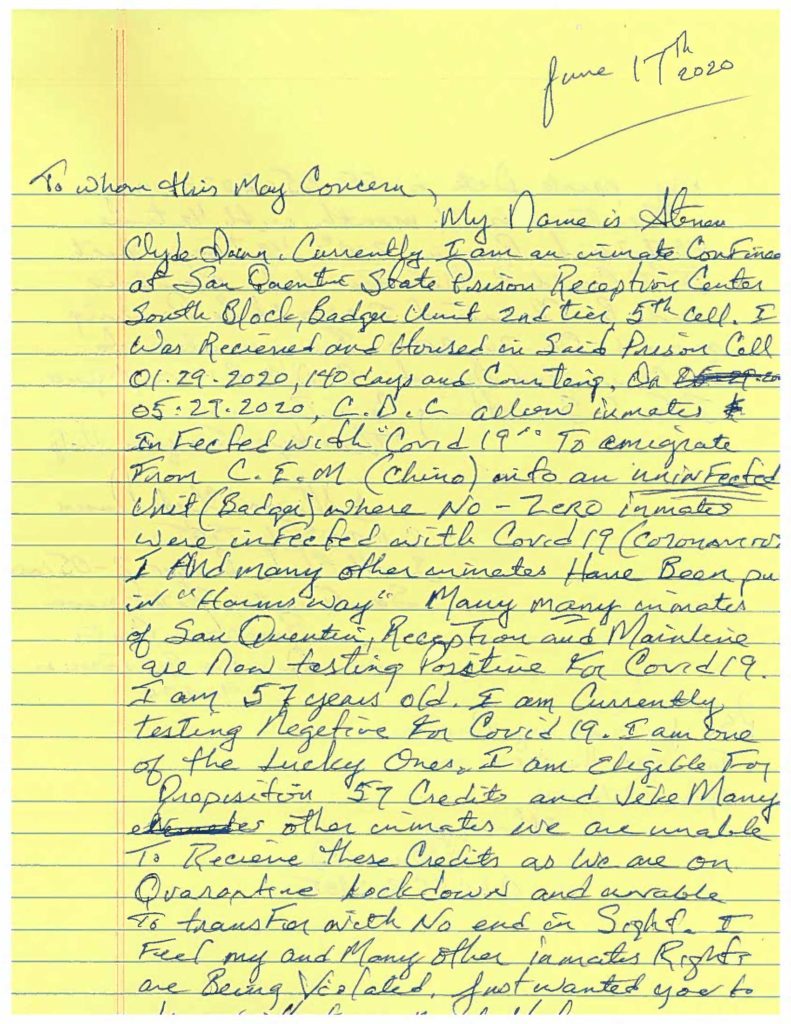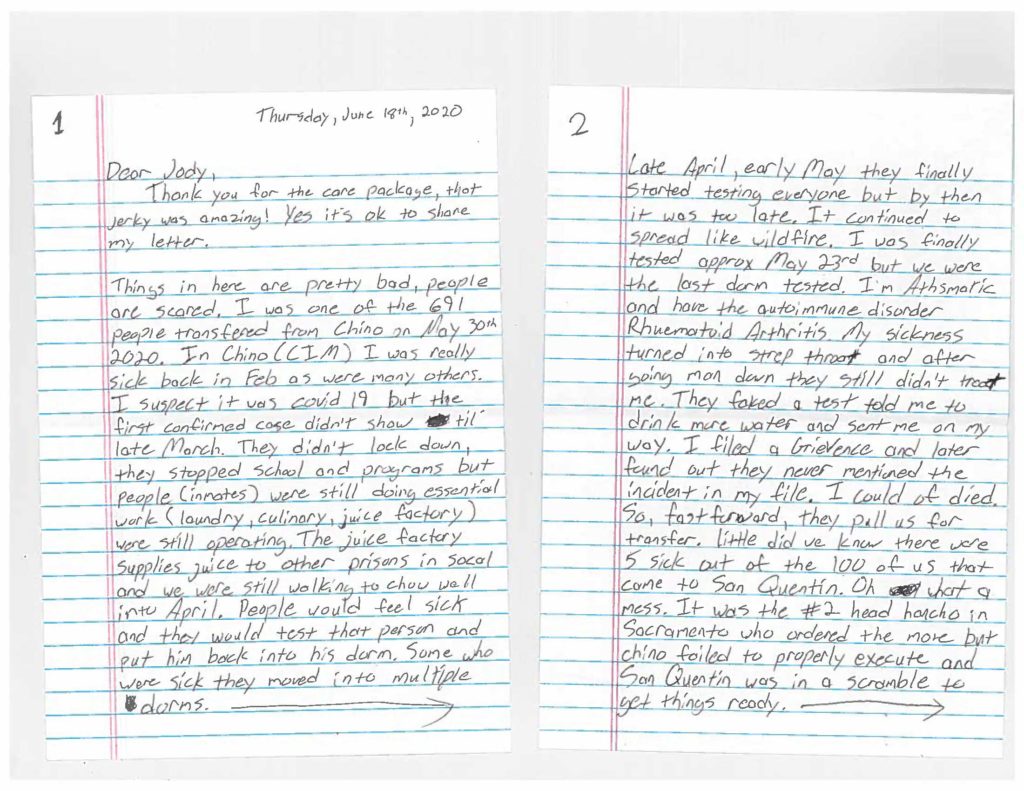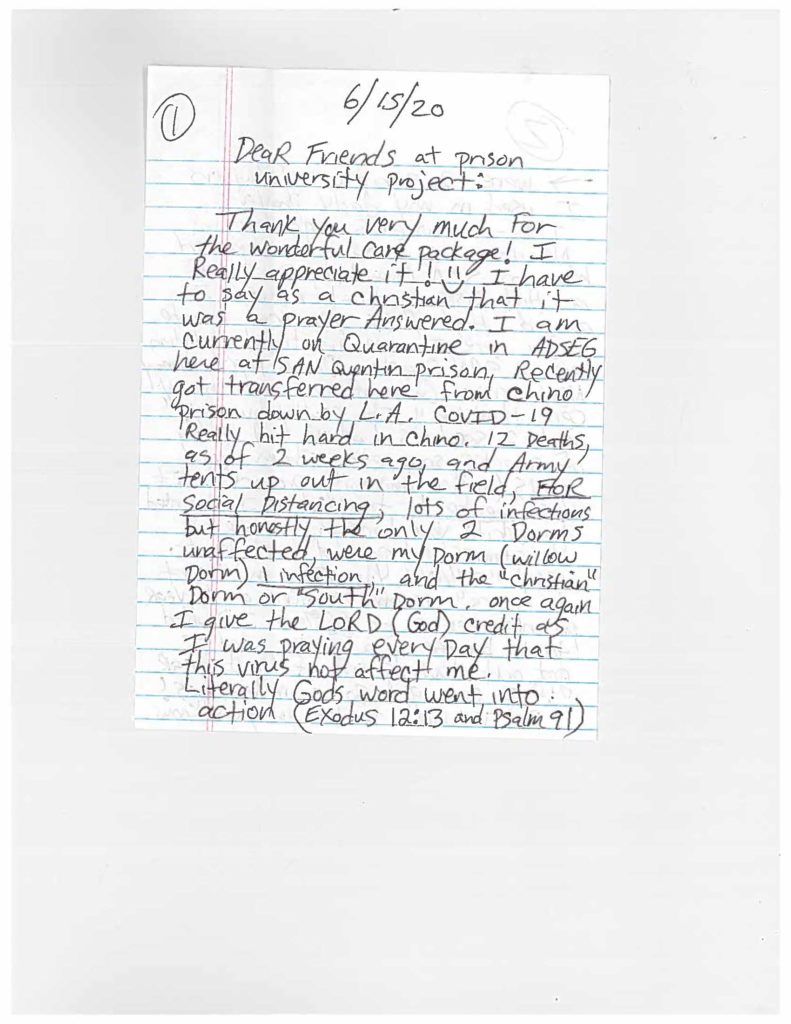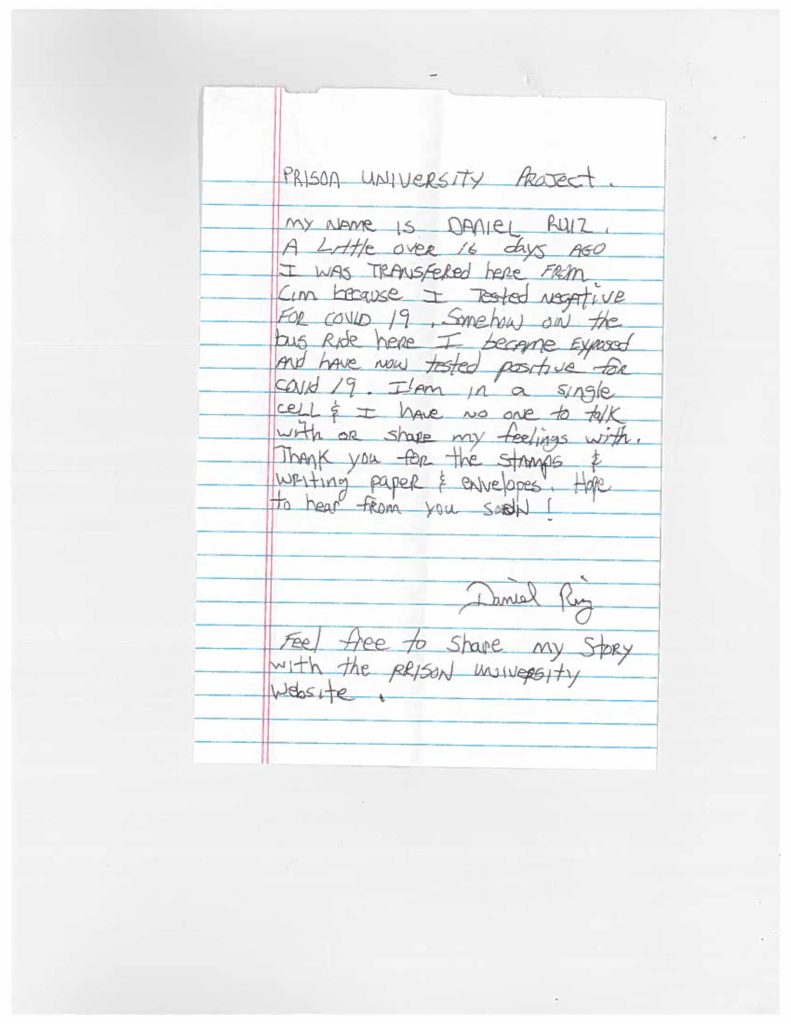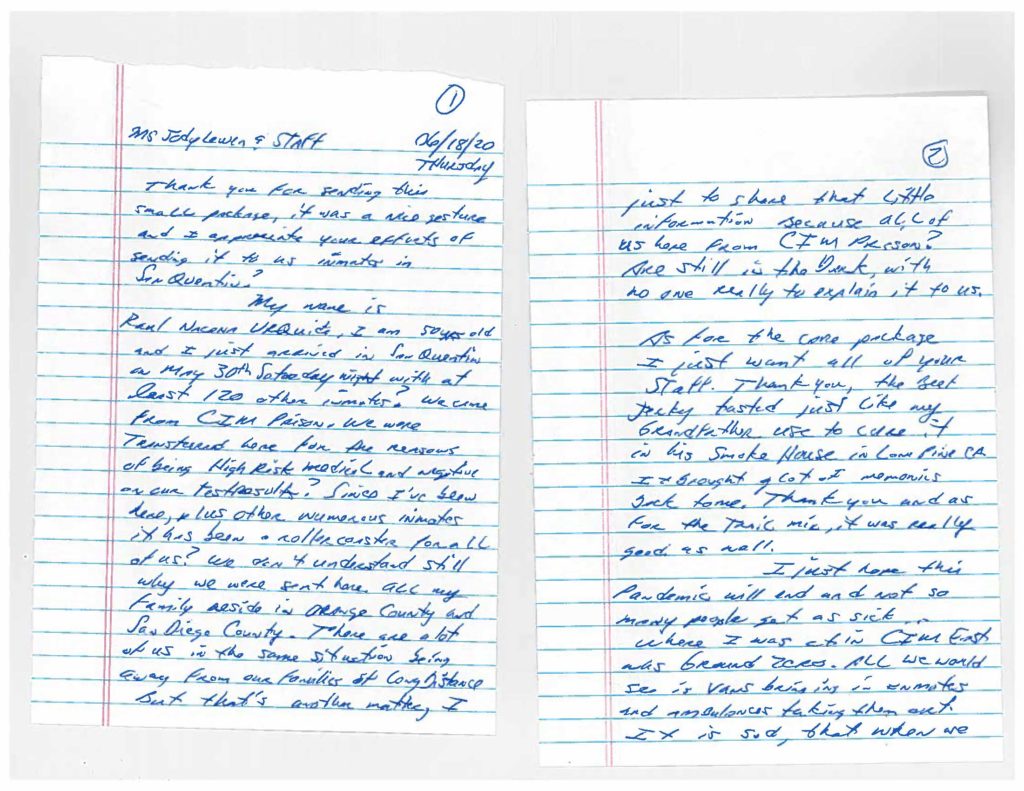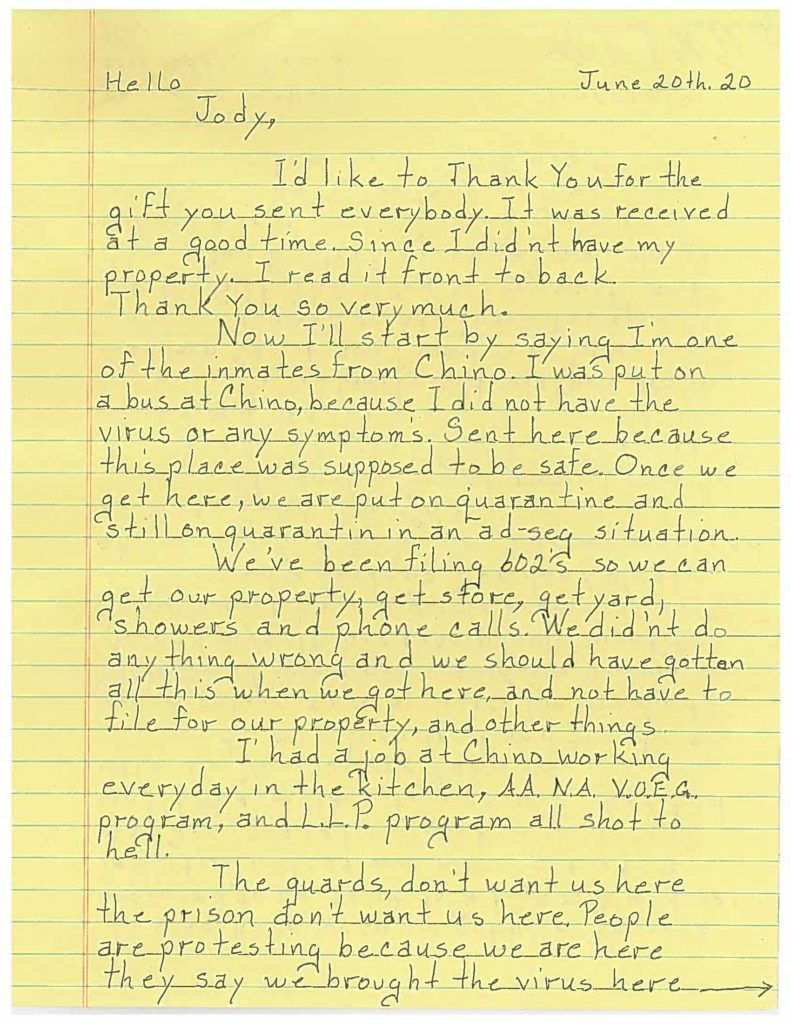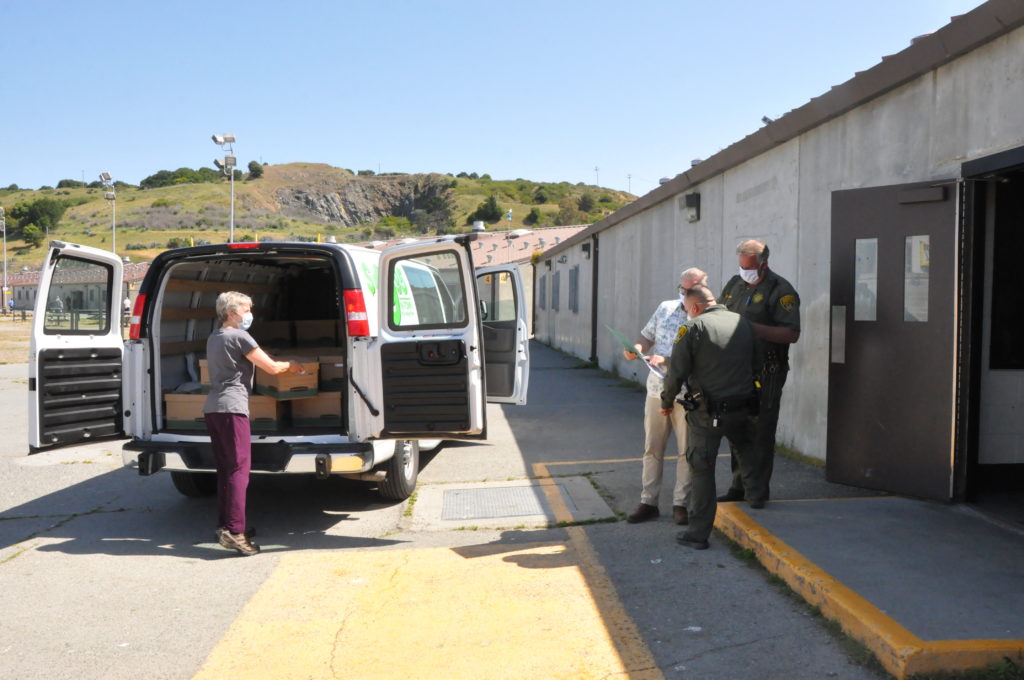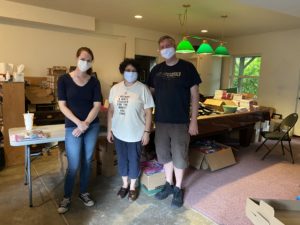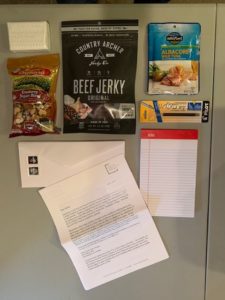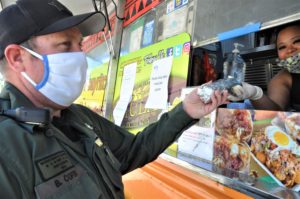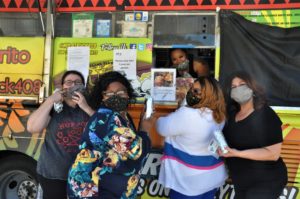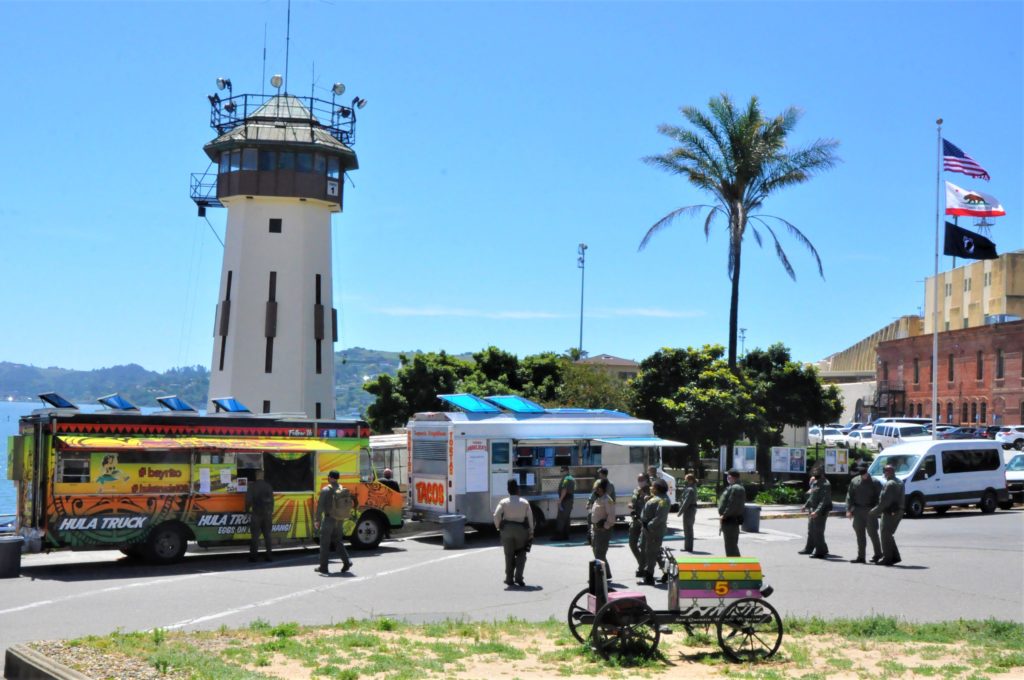The Prison University Project coordinated the installation of mobile showers for corrections staff to help mitigate the outbreak of COVID-19. This effort supports the physical and mental health and safety of staff, stabilizes essential operations at the prison, and helps contain the spread of COVID-19 inside San Quentin, throughout the county of Marin, and beyond.
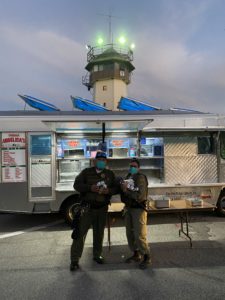
The mobile showers were delivered and installed last week and are fully operational for San Quentin staff to use at the end of their shifts throughout the day. We also provided food trucks for staff to grab a bite to eat before or after their shifts.
Support for San Quentin staff is one of the many COVID-19 emergency response initiatives in which we are currently participating. Most notably, we coordinated the successful deliveries of care packages to the entire populations of San Quentin and Avenal State Prisons. More information about this project is available here. San Quentin’s leadership has also allowed us to send magazines, textbooks, art supplies, hand-crank radios, and digital content (via closed circuit television) to people on death row and other areas of the prison outside of the general population areas.
The mobile shower installation was spearheaded by members of our organization’s Advisory Council, and generously funded by private donors. The Hilton San Francisco Union Square has graciously donated all shampoo, conditioner and body wash for the operation of the showers and Key Events stepped into action to voluntarily coordinate the procurement and delivery.
We have worked with the community since early in the crisis, underscoring the fact that helping the staff also helps the incarcerated and the community at large.
Please note that the Prison University Project became Mount Tamalpais College in September 2020.
